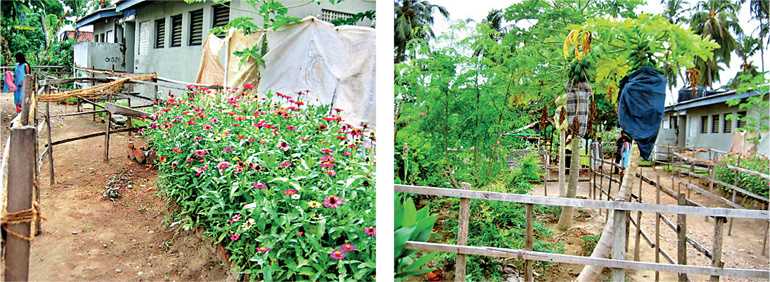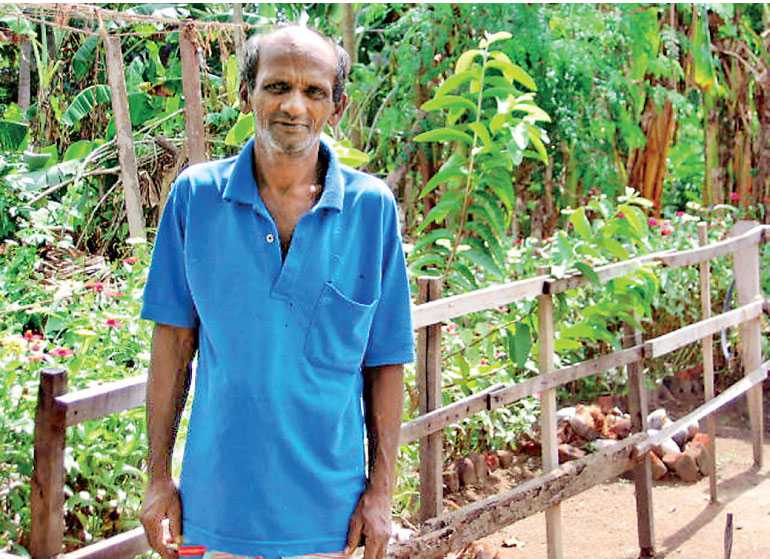Friday Dec 05, 2025
Friday Dec 05, 2025
Thursday, 13 August 2020 00:20 - - {{hitsCtrl.values.hits}}

Pictures of the toilet at Tissamaharama

Pictures of the toilet at Tissamaharama

The manager of the Tissamaharama temple toilets
We are perhaps one of the oldest nations to use sophisticated toilets. This is evident by the intricately designed toilet and urinal stones found in Anuradhapura and Polonnaruwa. Some of them are in display in Colombo and Anuradhapura museums. Those toilets are supposed to have used a very complex filtering system to ensure minimum impact to environment.
In the Vinaya, the rules for Sangha, there are a series of instructions that should be observed by monks when using toilets. So much so once during the time of Buddha, there had been a major argument between two groups of monks on the mannerisms connected with the usage of toilets, which led to a complex intellectual debate.
I am not a historian nor a scientist to comment more on the ancient toilets or the use of them, but one thing is evidently clear that we had a very advanced way to provide for this basic human need long before the advent of modern water-sealed toilets. It is interesting to note in some of the palaces in Europe built in the 16th or 17th century, what was provided was a system of buckets to be removed by scavengers. According to some accounts in Anuradhapura, there had been a separate village for those who did the work of cleaning the city, thus indicating the prominence given to cleanliness.
Contrast our historic record of usage of toilets with the public toilets at most of our pilgrim sites and historic locations, and it shows we are far behind those ancient standards, several centuries later.
Use of public toilets
For almost all Sri Lankans, the first experience of public toilets is that at school, and in most schools the lesson we learn is that public toilets can be as dirty as possible. In some schools lack of water supply also provides for this condition, even in this day and age. When there is no water, one cannot imagine what facilities would be there for collection and removal of sanitary towels used by females. Most of our teachers are women!
The way one use a public toilet reflects not only upbringing but concern for the other person, hence toilet-related etiquette needs to be taught at the tender ages in school to begin with. When this is not taught, it is nothing but natural that grownups behave in this manner. Now there is a significant advancement in the quality of the private toilets of most households. I remember that in the mid-eighties according to a market survey conducted, only 35% of the households used anything other than water to clean toilets. But today, the percentage must be very high. Yet the condition of public toilets is not so great. Even in offices and factories, the condition needs a lot of improvement.
Compared to some other developing countries, our toilet usage is very high, but the issue is the quality of maintenance.
Once I was travelling in Japan with a group, and there were a few Germans among us. After using a public toilet by a highway, they took pictures of the toilet, for it was so clean and attractive.
In Japan, this is mainly because of their attitude towards cleanliness taught from childhood, and more importantly the concern for the other person. The principle they observe is that a public place such as a toilet and a hot water bath should be as clean as it was before you use even after.
I think we sadly lack both these in most instances.
Therefore, it is high time we launch a national program to educate on toilet etiquette, and to communicate what the standards of a good toilet is.
Linked to this not only the numbers of toilets that need to be provided per certain number of employees, the Labour regulations should specify the minimum standards of toilets, including the provision of separate bins to collect sanitary towels and diapers, the frequency at which the toilets should be cleaned, etc.
Similar standards must be established at all restaurants, and the PHIs should be empowered to seal those outlets unless they maintain toilets for staff and visitors at acceptable hygienic standards.
High quality public toilets
Setting up toilets that can be benchmarked with those at international airports, at least at places within the cultural triangle and at major tourist attractions.
These toilets must be functional as well as aesthetically appealing as well. It is worthy to couple the ancient technology of filtering to these high volume public toilets, to ensure minimum harm to environment.
An essential standard will have to be the presence of dry floors. Providing separate places for washing feet is a special need of the Muslims.
Engineering and design solutions must be found to make sure that the public toilets are dust-free, dirt-free and dry-floored, considering that some of these will have to be established in open areas.
The maintenance of these toilets can be given to Samurdhi recipient families as an income source. But they must be adequately trained, quality standards properly communicated, and continuation must be linked to maintaining those standards. Just like at airports, there can be electronic rating devices. They will be able to sell various accessories and make additional income.
These toilets can be an ideal CSR project for a sanitary ware manufacturer or a toilet care material provider. A few years ago writing an article to a business newspapers called Aratuwa, I proposed that such high quality toilets can be a franchise range across the country called HYGENEE.
Considering the high value tickets we sell to tourists to enter our attractions, it is essential that we provide high quality toilets to them. For instance, a tourist must pay $ 30 to enter Sigiriya and $ 25 to visit Anuradhapura. Yet there are no toilets of high quality in most of these places.
Establish a high quality toilet range even as a franchise business or as an employment generation project at places of interest. Make it mandatory to provide quality toilet facilities at all public places. They should not only be clean but disability- and child-friendly as well.
This can be a revolution with far-reaching consequences. Improving the overall hygiene standards of the nation, learning to care for others, and to generate earning opportunities to a large number of families.
A case study
There is a public toilet at the Tissamaharama Temple premises. This is maintained by a person as a self-sustaining project. Talking to him many years, ago he explained to me the significance of what he does. “Sir, I am a respectable person from Badulla. I was doing various odd businesses here when one day the chief prelate of the temple asked me to take over and manage this toilet complex. I invested Rs. 14,000 I had and got the pits cleaned, white-washed, and introduced carpets. There is no proper toilet until you go to Kataragama. Consider the significance of this especially to ladies.”
He had grown flowers, vegetables and fruits around the toilets. And he sleeps in a small hut built in the garden, and some days he cooks his meals there. “Sir, I want this place to be so clean and free of smells so I can stay here. That is my standard.”